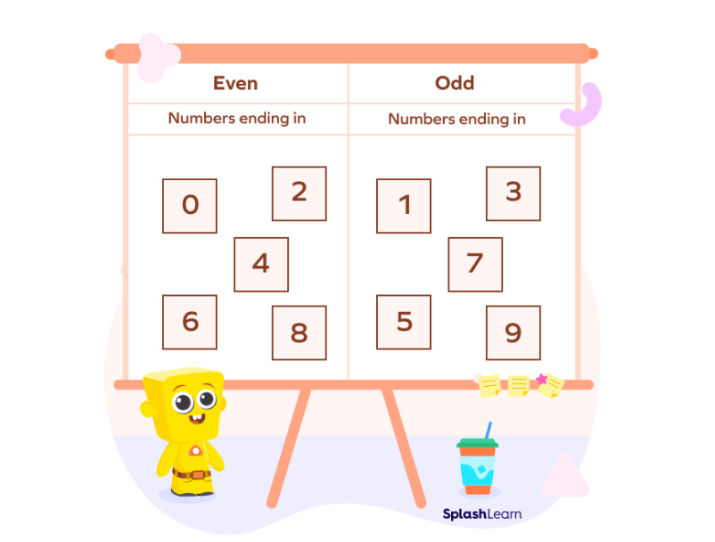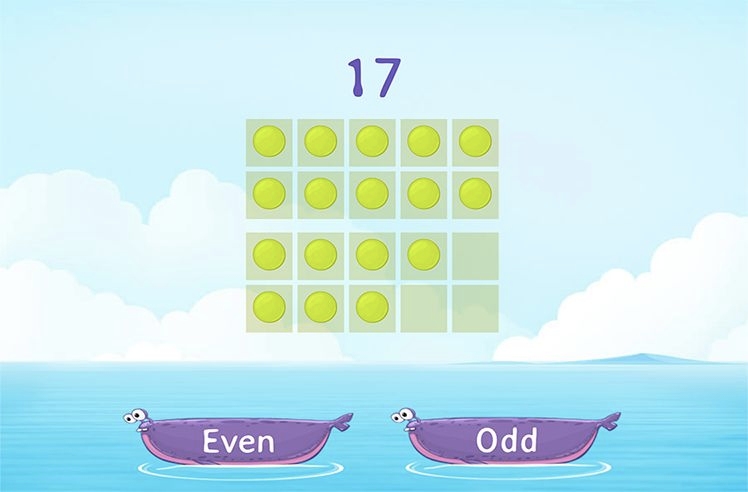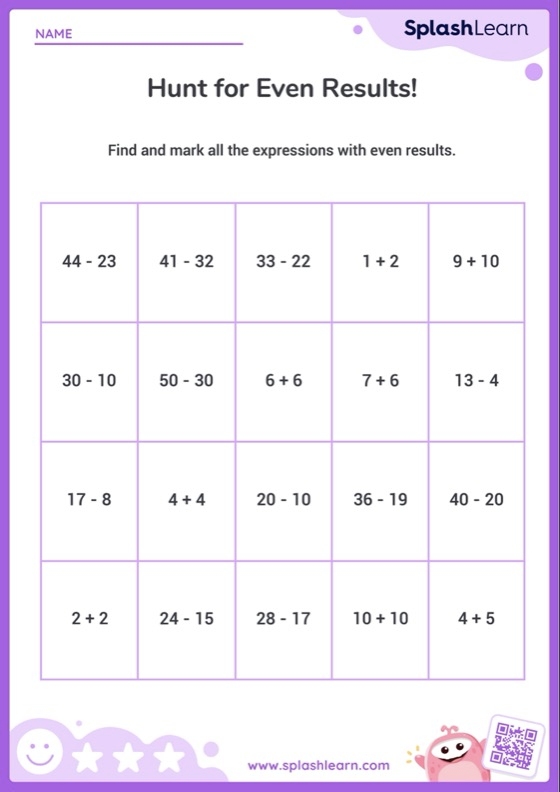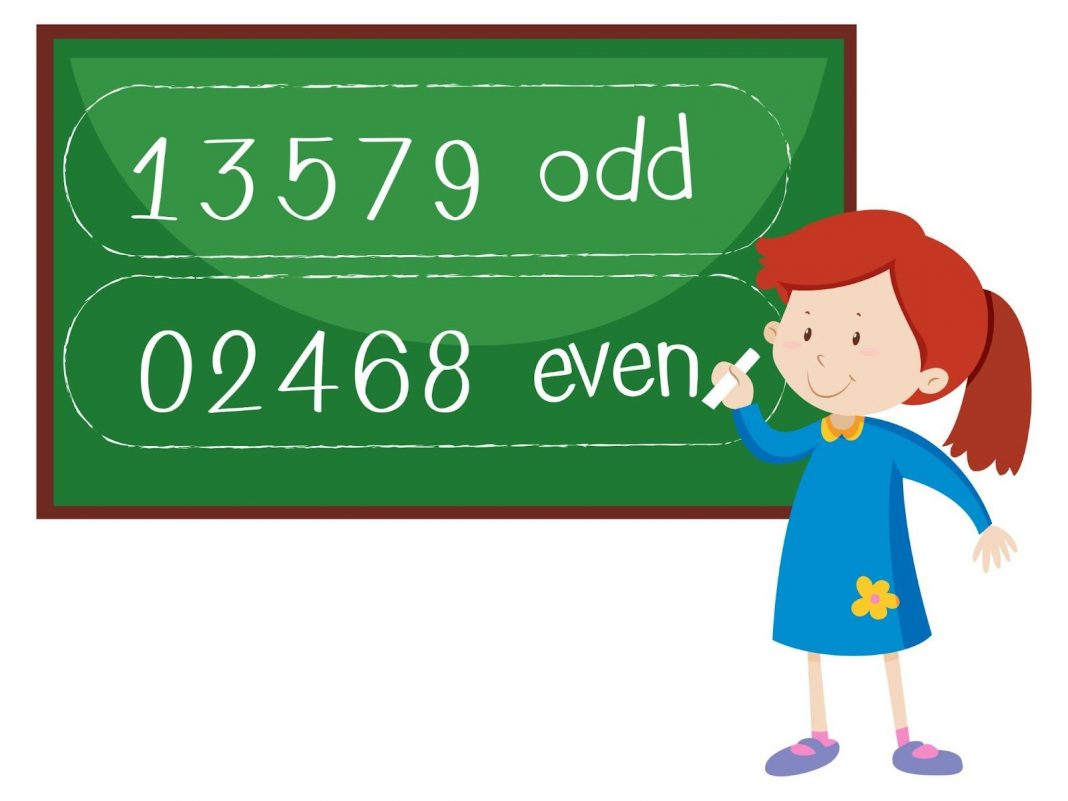Ever wondered how to teach odd and even numbers to your child? Grasping these fundamental math concepts is essential for them. This blog provides a step-by-step guide to help you effectively communicate these ideas. By the end of this post, your child will be able to identify and work with odd and even numbers confidently.
Math & ELA | PreK To Grade 5
Kids see fun.
You see real learning outcomes.
Watch your kids fall in love with math & reading through our scientifically designed curriculum.
Parents, try for free Teachers, use for free
How to Teach Odd and Even Numbers in 4 Easy Steps
Step 1: Introduction to Odd and Even Numbers
The first step is to explain odd and even numbers to your child, setting a foundation for understanding number patterns.
When to start: Begin this lesson once your child is comfortable recognizing numbers and counting. For some children, this could be as early as preschool.
How to teach:
- Play interactive games to explain the concept: Here are some online games where kids use visual aids to learn odd and even numbers. For instance, in the first game, they use a 10-frame to see numbers clearly. The game focuses on numbers up to 50, asking kids to identify if each number is odd or even. This combination of visuals and number recognition makes learning both fun and effective.
Begin here
- You can do a simple activity that visually demonstrates the concept. Gather a small group of items, like blocks or fruits, and invite your child to divide them into two groups. For example, if you have six apples, show how they can be split into two groups of three without any leftovers — this is an even number. Then, try it with five apples. They’ll see that one apple is left over, making it an odd number. Through this, you’ll help them see that even numbers divide neatly into two equal groups, while odd numbers leave one out.
Now your child should be able to:
- Identify whether a number is odd or even based on its ability to be divided into two equal groups without leftovers.
- Understand the basic concept that even numbers split evenly, while odd numbers do not.
Step 2: Pairing and Grouping
The goal here is to help children visualize odd and even numbers through pairing, enhancing their ability to differentiate between the two. This step is crucial in teaching odd and even numbers to a child, as it builds a practical understanding they can apply in real-life scenarios.
When to start: Once your child understands the basic concept of odd and even numbers from Step 1, introduce them to pairing and grouping.
How to teach:
- Gather a collection of small, easily manageable items like coins, beads, or small toys.
- Spread them out and encourage your child to pair them up. Guide them to notice if each item finds a pair or if one is left without a partner.
- Explain that if every item pairs up without any left alone, the total number of items is an even number. If one item remains unpaired, the total is an odd number.
- If your child needs help with grouping and pairing, here is a fun game in which kids count various objects grouped in pairs to practice counting by twos.
Begin here
Now your child should be able to:
- Independently pair objects and understand why some items don’t find a pair.
- Correctly identify if the total number of items is odd or even.
Step 3: Recognizing Patterns

The objective is to help your child recognize the pattern in the last digits of odd and even numbers, which is a critical step in learning odd and even numbers.
When to start: Introduce this step after your child is comfortable with identifying odd and even numbers through pairing and grouping.
How to teach:
- Create flashcards with numbers ending in each digit from 0 through 9.
- Discuss and demonstrate that numbers ending in 0, 2, 4, 6, and 8 are even, and those ending in 1, 3, 5, 7, and 9 are odd.
- Use a fun sorting game where your child sorts the flashcards into two piles: odd and even. This visual and physical activity reinforces the recognition of patterns.
Now your child should be able to:
- Identify the last digit of a number and determine whether it is odd or even without needing physical pairing.
- Apply this knowledge to larger numbers, enhancing their skill in identifying odd and even numbers in varied contexts.
Step 4: Practical Application with Story Problems
This step focuses on applying the understanding of odd and even numbers to real-world contexts. It culminates previous lessons and introduces practical ways to teach odd and even numbers.
When to Start: Move to this step after your child can comfortably identify odd and even numbers by recognizing patterns in the last digits.
How to Teach:
- Create simple story problems incorporating everyday scenarios, such as dividing treats among friends or organizing books on a shelf.
- For instance, ask, “If you have 13 candies and want to share them equally between two friends, will each friend get the same amount without any leftovers?”
- Encourage your child to solve these problems using both mental calculation and physical objects if needed, reinforcing their understanding of how odd and even numbers behave in different situations.
4 Additional Ways to Teach Odd and Even Numbers
1. Online Odd and Even Number Games

Introduce children to interactive online games that focus on odd and even numbers. These games provide immediate feedback and keep kids engaged with repetitive practice. This helps reinforce their understanding while keeping the learning fun and interactive.
2. Odd and Even Number Worksheets

Worksheets are a structured way to reinforce concepts through practice and repetition. They help children identify patterns and consistently apply their knowledge of odd and even numbers. Use them to complement hands-on learning for comprehensive understanding.
3. Odd and Even Days
Designate certain days as “odd” or “even” to create playful learning opportunities. On odd days, engage in activities that involve odd numbers (like hopping three times), while even days feature even-numbered activities (like clapping four times). It makes learning rhythmic and memorable.
4. Use Snack Time
Use snack time as a learning opportunity by encouraging kids to divide snacks evenly or identify leftover pieces. This practical application makes learning both fun and relatable, helping children see how math concepts apply to their daily lives.
Conclusion
We’ve covered a comprehensive approach on how to teach odd and even numbers to your child through engaging activities and practical examples. Regularly practice these steps with your child using everyday objects and scenarios to reinforce these concepts. This hands-on experience will solidify their understanding and make them confident in identifying and working with odd and even numbers daily.
Related Reading: How to Teach Number Sense to Kids
Frequently Asked Questions (FAQs)
How to explain odd numbers to children?
Odd numbers are those that cannot be evenly divided into two groups; there will always be one leftover. Demonstrate this with objects like pencils or fruits, showing that one item will always be without a pair when trying to pair them.
What are some fun ways to teach odd and even numbers to kindergarten kids?
Use engaging activities like number dances, where kids step or hop to numbers on a floor grid according to whether they’re odd or even. Alternatively, play sorting games with colorful objects or stickers, letting them categorize items into odd and even groups, which adds a tactile element to the learning process.
How to explain even numbers to children?
Even numbers are those that can be divided into two equal groups without any leftovers. You can illustrate this by pairing up objects like socks or blocks and showing that everything matches up perfectly without any leftovers.



































